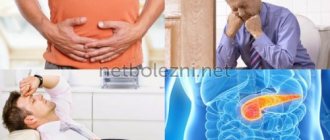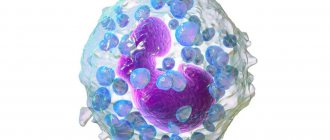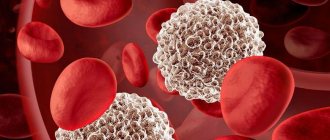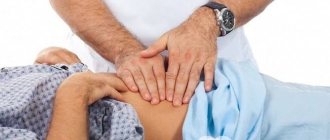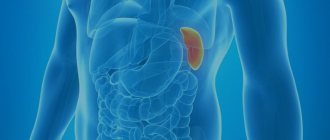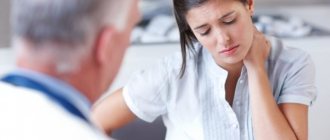Generally accepted norms of indicators
The acceptable level of bilirubin concentration for each age is different. The highest concentration of the substance in the blood is observed in newborns, in the initial stages of life, up to 200 µmol/l, this is due to the period of adaptation of the newborn’s gastrointestinal tract to the digestion of mother’s milk. The acceptable level of bilirubin concentration for each age will be different. The highest concentration of the substance in the blood is observed in newborn children, in the initial stages of life. In one-year-old children and children under 13 years of age, a satisfactory indicator of the concentration of indirect pigment is considered to be up to 20.3 µmol/l, for direct pigment up to 5.2 µmol/l.
The degree of concentration of the substance for adults should not cause concern if the survey analysis shows a level of up to 19.9 µmol/l for indirect, and 4.9 µmol/l for direct bilirubin, since such measurements are satisfactory for people of the adult age category.
Complexes with this research
Examination during pregnancy.
3rd trimester 9,620 ₽ Composition Expanded hospital complex Expanded infectious screening for prevention and hospitalization 7,700 ₽ Composition
Biomarkers of liver functional capacity RUB 2,760 Composition
IN OTHER COMPLEXES
- Joining IVF RUB 23,020
- Examination during pregnancy. 1st trimester 16,690 RUR
- Biochemistry of blood. 19 indicators 6,280 ₽
- Biochemistry of blood. 8 indicators 990 ₽
- Men's check-up No. 1 RUB 18,570
Causes of increased bilirubin in the blood
The source of the pathological condition is caused by disruption of the liver, resulting in improper outflow of bile, which causes the occurrence of viral lesions and hepatitis.
symptoms of increased bilirubin
The cause of increased bilirubin in the blood may be:
- Chronic or autoimmune hepatitis.
- Non-benign neoplasms in the liver area.
- Incorrect functioning of the pancreas.
- Intoxication of the body through poisoning can also cause an increase in bilirubin.
By the way, any of the above reasons is pathological and requires immediate medical intervention and long-term treatment
Causes of urobilinogenuria
Urobilinogens are derivatives of bilirubin. Their detection in urine is considered an important diagnostic tool. The presence of urobilinogens in urine can occur with increased destruction of red blood cells (hemolytic conditions), lesions of the liver parenchyma, and increased reabsorption in the distal colon.
In viral hepatitis, urobilinogenuria reaches maximum values at the onset of the disease, then gradually decreases and is practically undetectable during the height of the disease and increases again during recovery. Diseases in which urobilinogenuria occurs:
- Diseases accompanied by hemolysis
: hemolytic anemia, hemoglobinopathies, conditions after blood transfusions. - Liver diseases
: viral, toxic hepatitis, liver cancer. - Intestinal diseases
: enterocolitis, prolonged constipation, intestinal obstruction.
Symptoms indicating increased bilirubin
There are symptoms the presence of which in a person means that the percentage of bilirubin in the blood is too high:
- The whites of the eyes began to turn yellow.
- The skin color becomes more jaundiced.
- Itching of the skin, which intensifies at night.
These symptoms are an important indicator that the body is undergoing internal bile poisoning; ignoring these problems can lead to serious disruptions in the functioning of the body.
The often manifested bitter taste in the mouth is also one of the symptoms of increased bilirubin in the blood.
treatment of direct bilirubin in the blood
A rapid increase in this substance provokes the darkening of the urinary fluid to a brown color, and solid bowel movements take on a white color. All of the above symptoms are accompanied by severe weakness, high fever and enlarged liver. If you detect at least one of the above symptoms, you should immediately seek help from the nearest hospital.
Bilirubin metabolism disorders, jaundice
Hyperbilirubinemia is a pathological condition characterized by an imbalance between the formation and release of bilirubin, the main clinical sign of which is jaundice (icterus) - yellow pigmentation of the skin or sclera with bilirubin, caused by an increase in the content of total bilirubin in the blood serum.
Although the exact level of bilirubin in the blood at which jaundice becomes clinically apparent varies, it can be easily detected when bilirubin levels are above 34.2 µmol/L (normal range 8.5–20.5 µmol/L). Blood test for biochemistry, children's clinic "Markushka".
Jaundice is most often diagnosed when the urine is dark or the skin or sclera is yellow.
Jaundice is most often diagnosed when the urine is dark or the skin or sclera is yellow. The yellow color of the sclera is explained by the large amount of elastin in this tissue, which has a special affinity for bilirubin, therefore jaundice is often determined by the icterus of the sclera.
With severe jaundice, the skin may acquire a greenish tint due to the conversion of bilirubin to biliverdin, a product of bilirubin oxidation.
Jaundice should be distinguished from yellow skin pigmentation (false jaundice)
Jaundice should be distinguished from yellow skin pigmentation ( false jaundice ) caused by other causes, such as carotenemia (excessive consumption of foods containing carotene: pumpkin, carrots and red peppers, especially when the liver is damaged, when carotene cannot be processed into vitamin A ), which is accompanied by a yellowish discoloration of the skin, but not the sclera and mucous membranes.
Hyperbilirubinemia in children
Hyperbilirubinemia occurs due to: increased pigment production; decreased absorption of bilirubin by the liver; violations of bilirubin conjugation; reducing the excretion of conjugated pigment from the liver into bile.
Prehepatic (hemolytic) jaundice
Prehepatic (hemolytic) jaundice occurs as a result of increased hemolysis of red blood cells caused by intra- or extra-erythrocyte factors: hemolytic anemia, defects of erythrocyte enzymes, hemolytic disease.
The skin is usually lemon-yellow (patients are more pale than jaundiced). In addition to manifestations caused by hemolysis of red blood cells (anemia, reticulocytosis, hemoglobinuria), there is an increase in the content of indirect bilirubin in the blood.
Hyperbilirubinemia due to indirect bilirubin
Hyperbilirubinemia caused by indirect bilirubin is also observed when bilirubin transport is impaired (without increased hemolysis). The process of uptake of bilirubin by a liver cell involves the cleavage of the pigment from albumin and its subsequent binding to ligandin. A decrease in the accumulation of unconjugated bilirubin in the cytosol due to a decrease in the activity of Y- and Z-proteins (competitive inhibition, fever) leads to the accumulation of unconjugated bilirubin in the blood. Child's blood test - pediatric medical.
Some breastfed newborns develop severe jaundice - Arias syndrome - due to the accumulation of indirect bilirubin in the blood, the level of which progressively increases until the 4th day of life and reaches a maximum by the 10-15th day (up to 250-300 µmol/l ), and then slowly decreases to normal by the 3-12th week of life.
Hyperbilirubinemia above 12 µmol/L occurs in 30% of breastfed newborns. The cause of its occurrence may be increased activity of p-glucuronidase in breast milk, causing an increase in the content of unconjugated bilirubin in the intestine with its subsequent absorption. If breastfeeding is stopped for some period, the bilirubin level decreases to normal in the next 4-8 days.
Transient familial hyperbilirubemia of newborns
Transient familial hyperbilirubemia of newborns is observed in some families and is manifested by massive hyperbilirubinemia developing in all children born to the same mother suffering from this disease in the first 4 years of their life. Jaundice is more intense, persists longer than physiological jaundice, and is associated with the presence of inhibitory substances of a steroid nature in the plasma and urine of the mother and newborn.
Intermittent juvenile jaundice
Intermittent jaundice, which often occurs during puberty and has a benign course. Bilirubinemia is expressed to a moderate degree (bilirubin level in the range of 17-85 µmol/l) and is not accompanied by a violation of biochemical indicators of liver function and its histological picture.
Hyperbilirubinemia associated with impaired bilirubin conjugation
Hyperbilirubinemia associated with impaired bilirubin conjugation (decreased bilirubin glucoronyl transferase activity). In almost every newborn, on the 2-5th day of life, slight transient unconjugated bilirubinemia (not higher than 150 mg/l) is detected - “physiological” jaundice. It is caused by age-related immaturity of the glucoronyl transferase system and usually disappears by the 7-10th day. The degree of jaundice in premature babies is usually more significant and lasts longer (up to 4 weeks). An increase in bilirubin concentration can reach more than 200 µmol/l, which creates a risk of brain damage (bilirubin encephalopathy).
Prolonged and significantly pronounced jaundice with congenital hypothyroidism
Prolonged and significantly pronounced jaundice (up to 2-4 months) is observed with congenital hypothyroidism. Hypothyroidism occurs 3 times more often in girls than in boys. Hypothyroidism interferes with the normal maturation of glucoronyl transferase, bilirubin levels rise to 220-340 µmol/l.
Congenital and acquired disorders of bilirubin binding
Both congenital and acquired disorders of bilirubin binding may also occur, caused by impaired glucuronidation activity (Crigler-Nayjar syndrome, inhibition of glucuronidation by drugs).
Acquired disorders of glucoronyl transferase activity may be caused by drugs (eg, enzyme inhibition) or liver disease. However, when liver cells are damaged, the excretory capacity of the liver is impaired to a greater extent than its ability to bind bilirubin with glucuronic acid. Therefore, in most hepatocellular diseases, hyperbilirubinemia is associated mainly with conjugated bilirubin.
Hyperbilirubinemia due to the predominance of direct bilirubin in the blood
Impaired excretion of bilirubin into the bile ducts, regardless of whether it is caused by mechanical or functional factors, leads to the predominant development of hyperbilirubinemia and bilirubinuria associated with an increase in the level of direct bilirubin. Bilirubin in urine is the most important sign of hyperbilirubinemia associated with direct bilirubin.
Hereditary conjugated hyperbilirubinemia
Hereditary conjugated hyperbilirubinemia is manifested by moderately severe jaundice, inherited in an autosomal recessive manner. It disrupts the transport of bilirubin and other organic anions from the liver to bile. The disease manifests itself from 2 years of age.
In hepatocellular disease (hepatitis, cirrhosis), three main stages of bilirubin metabolism are disrupted
In hepatocellular disease ( hepatitis, cirrhosis ), three main stages of bilirubin metabolism are disrupted - its absorption by the liver, binding and excretion. Moreover, excretion is the stage that limits the rate of bilirubin metabolism, and it is usually the stage that is disrupted to a greater extent. As a result, in these diseases hyperbilirubinemia predominates, mainly caused by direct bilirubin. Vaccination of children against hepatitis B at the Markushka children's clinic.
Parenchymal jaundice
Parenchymal jaundice most often occurs with acute viral and toxic hepatitis, chronic hepatitis, cirrhosis of the liver, less often with secondary hepatitis that develops in various infectious diseases (infectious mononucleosis, Coxsackie infection, leptospirosis), bacterial diseases (sepsis, typhoid, brucellosis, etc.) .
When liver cells are damaged, a communication occurs between the bile ducts, blood and lymphatic vessels, through which bile enters the blood and partially into the bile ducts. Swelling of the periportal space can also contribute to the reabsorption of bile from the bile ducts into the blood. Swollen liver cells compress the bile ducts, creating a mechanical obstruction to the outflow of bile. The metabolism and functions of liver cells are disrupted. Bilirubinemia is caused predominantly by conjugated bilirubin. At the same time, the level of free bilirubin in the blood increases, which is associated with a decrease in hepatocyte functions such as capture, intracellular transport of free bilirubin and its binding into glucuronides. The entry of bile acids into the blood along with bile causes the development of cholemic syndrome. A decrease in the flow of bile into the intestines (hypocholia, acholia) leads to a decrease in the formation of bilirubin metabolites and their excretion in urine and feces (traces of stercobilin), as well as the appearance of symptoms of acholic syndrome. The rich yellow color of urine is due to the increased content of conjugated bilirubin (bilirubinuria) and urobilin, which is not sufficiently destroyed in the liver after entering it due to the hepatic-intestinal circulation, enters the general bloodstream and is excreted by the kidneys (urobilinuria).
Jaundice occurs when bile flow is obstructed
Jaundice is observed when there is a violation of the outflow of bile (obstructive or mechanical) due to atresia of the biliary tract, stone obstruction, compression of the biliary tract by a tumor process, enlarged lymph nodes or thickening of bile. A mechanical obstruction to the outflow of bile leads to stagnation and increased bile pressure, dilation and rupture of bile capillaries and the entry of bile directly into the blood or through the lymphatic tract. Jaundice increases gradually (due to conjugated bilirubin).
Cholestasis: familial benign recurrent, malignant familial, cholestatic syndrome, intracellular cholestasis
Familial benign recurrent cholestasis. In its pathogenesis, hypoplasia of the lymphatic vessels of the liver and other organs is important. Clinically, the disease manifests itself with signs of cholestasis already in the neonatal period. Then cholestasis decreases on its own and recurs in adults.
Malignant familial cholestasis manifests itself in the first year of life as jaundice, which resolves spontaneously after a few weeks or months. Then the intensity of jaundice increases, and severe itching occurs. The liver and spleen are significantly enlarged.
Cholestatic syndrome can be observed in children with cholangiocholitis, when signs of impaired bile outflow are accompanied by symptoms of a bacterial infection (fever, leukocytosis, shift in the leukocyte formula, increased ESR). In young children, cholangiocholitis can be a complication of severe enteritis, surgical interventions on the intestines, or mechanical obstructions to the outflow of bile.
With intracellular cholestasis, unlike extrahepatic cholestasis, there is no pain in the liver area; expansion of the bile ducts and organ enlargement are insignificant.
Treatment of elevated direct bilirubin
You can influence the high concentration of bilirubin in the blood by following a diet and doing physical exercise. After undergoing a biochemical examination of the blood, based on the tests obtained, the doctor prescribes the patient a set of treatment and recommendations aimed at establishing the proper functioning of the liver and the outflow of bile. Even with the slightest discrepancy with the norms, the doctor is obliged to prescribe treatment to correct the functioning of metabolic processes; you can often undergo such a course of treatment at home, while following all the recommendations. In this case, the examination results show a disappointing picture; if necessary, surgical intervention is required, followed by hospitalization in a hospital.
References
- Goncharik, T.A. Differential diagnosis of jaundice. : educational method. allowance / T. A. Goncharik; Belarusian. state honey. University, 1st department internal diseases. - Minsk: BSMU, 2009. - 24 p.
- Lazareva, L.A., Lazarev, A.N. A complete course on deciphering tests. - M.: AST, 2021. - 141 p.
- Severin, E.S., Aleynikova, T.L., Osipov, E.V. and others. Biological chemistry. - M.: Medical Information Agency LLC, 2008. - 364 p.
- Tkachenko, A.K., Ustinovich, A.K., Romanova, O.N. and others. Jaundice of the neonatal period: educational manual. - Minsk: BSMU, 2021. - 68 p.
- Tholey, D. Jaundice. — Thomas Jefferson University Hospital, 2021.
Story
In 1847, the German scientist Rudolf Virchow and his colleagues separated bilirubin crystals from blood taken from a hematoma. More than a century later, Irving M. London and collaborators at Columbia University demonstrated that heme was indeed its source.
Jaundice is especially common in newborns and is not always destructive. The first mentions of it probably date back to the beginning of the 18th century. German pathologist Johannes Orth published his results in 1875 after autopsying a child who died of jaundice. The question was how to make the correct diagnosis based on more than just skin color.
At the beginning of the 20th century, while working on his dissertation, gynecologist and obstetrician Gustav Hazlehurst discovered a method for detecting bile dye in urine and blood. The blood serum was mixed with alcohol and centrifuged, causing the protein to precipitate. An indicator containing a diazo group (RC=N+=N−) was added to the turbid supernatant liquid. In the presence of bile dye, the liquid turned purple. After this step, more alcohol was added in a certain amount and the fatty acids dissolved, the liquid became transparent, if the purple color was more saturated than that of the comparison sample, this meant that the bilirubin level was higher than normal. In this case, by adding alcohol gradually, it was possible to determine how much bilirubin in the serum exceeded the norm.
conclusions
- Bilirubin is a marker that allows you to determine pathologies in the metabolism and functioning of the cardiovascular system, as well as in the liver, spleen, and bile ducts.
- It is recommended to give it only to people with disorders of the above organs and with jaundice.
- Taking a simple drug such as acetylcysteine with paracetamol or ibuprofen, for example, minimizes the load on the liver.
- Let us remind you once again about a healthy lifestyle, and also about the fact that alcohol is very harmful to your body.
Correction
Conservative therapy
There are no methods for self-correction of bilirubinuria, as well as urobilinogenuria. Treatment of the underlying disease is necessary. In case of liver diseases, first of all, restrictive measures are taken - the appointment of dietary table No. 5 according to Pevzner, refusal to drink alcohol, discontinuation of the drug (in the case of drug-induced hepatitis). Also, depending on the cause, the following medications are used:
- Antiviral agents.
For the treatment of viral hepatitis, pelated interferon, nucleoside analogues (entecavir, ribavirin), reverse transcriptase inhibitors (lamivudine) are used. - Choleretic drugs.
For diseases accompanied by cholestasis, drugs containing ursodeoxycholic acid are effective. - Hepatoprotectors.
To protect liver cells from excessive damage, ademetionine and glycyrrhizic acid are used. - Glucocorticoids.
Adrenal hormones (prednisolone, methylprednisolone) are used to suppress autoimmune inflammation in AIH, PSC, and PBC. - Drugs to combat hemolysis.
To prevent hemolysis, immunosuppressants (hydroxyurea) and intravenous immunoglobulin are prescribed
.
To relieve crises, they resort to narcotic and non-narcotic analgesics. - Antiparasitic agents.
For amebiasis, metronidazole and ornidazole are used, for echinococcosis - mebendazole. - Chemotherapy.
Patients with hepatocellular cancer or cholangiocarcinoma are prescribed multikinase inhibitors (sorafemib, lenvatinib).
Surgery
Patients with calculous cholecystitis and cholelithiasis are advised to undergo surgical removal of the gallbladder (cholecystectomy). Currently, endoscopic operations with minimal trauma are predominantly performed. In case of echinococcosis, the cyst is removed. The most effective treatment for many diseases accompanied by hemolysis is splenectomy (removal of the spleen).
After this operation, to prevent infectious complications, vaccination against pneumococcus, meningococcus, and Haemophilus influenzae is mandatory. For some diseases, such as liver cancer, cholangiocarcinoma, sclerosing cholangitis, the only way to prolong the patient’s life is liver transplantation.
Our channels
- Telegram research
- Telegram chat
Sources
[1] T. Maruhashi, Y. Kihara, Y. Higashi, Bilirubin and endothelial function, J. Atheroscler. Thromb. 26 (2019) 688–696. doi:10.5551/jat.RV17035. [2] M. Pawlak, P. Lefebvre, B. Staels, Molecular mechanism of PPARα action and its impact on lipid metabolism, inflammation and fibrosis in non-alcoholic fatty liver disease, J. Hepatol. 62 (2015) 720–733. doi:10.1016/j.jhep.2014.10.039. [3] TD Hinds, DE Stec, Bilirubin Safeguards Cardiorenal and Metabolic Diseases: a Protective Role in Health, Curr. Hypertens. Rep. 21 (2019). doi:10.1007/s11906-019-0994-z. [4] H. L. Liston, J. S. Markowitz, C. L. DeVane, Drug glucuronidation in clinical psychopharmacology, J. Clin. Psychopharmacol. 21 (2001) 500–515. doi:10.1097/00004714-200110000-00008. [5] T. Yanagita, S. Y. Han, Y. Hu, K. Nagao, H. Kitajima, S. Murakami, Taurine reduces the secretion of apolipoprotein B100 and lipids in HepG2 cells, Lipids Health Dis. 7 (2008) 1–6. doi:10.1186/1476-511X-7-38.
Lifext application why, what are the prospects
We have made an application in which we introduce all the methods of life extension. An early version has been released right now, where monitoring and individual analysis evaluation works.
General norms and Lifext norms are assessed.
The application is multilingual - currently English + Russian.
Analysis is stored securely in the Google cloud. It immediately shows that the analysis falls within the general norms and norms of Lifext, taking into account gender and age. In the next version it will be possible to add any tests (not only from the list) + reminders when they need to be taken.
Early subscription made - 120 rubles. per month (approximately $1.9, the price may change when the course changes). When introducing cool features, the subscription will be more expensive, but for early users the price will remain the same forever. Please consider this early subscription as something like crowdfunding, since writing an application, conducting research and other activities becomes impossible only on enthusiasm.
There are still glitches and bugs, but we are constantly improving everything, we ask for your understanding 
Diagnostics
If bilirubinuria is detected, you should consult a general practitioner to find out the reasons for its occurrence. Bilirubinuria is a fairly early sign of damage to the hepatobiliary system; its occurrence often precedes the development of a clear clinical picture of the disease. At the appointment, an examination is carried out, during which attention is paid to the color of the skin and mucous membranes, enlargement of the liver, symptoms of damage to the gallbladder (Kehr's, Ortner's symptoms).
Changes in the color of urine and feces are determined. When collecting anamnestic data, they find out what medications the patient is taking. The level of bilirubin and urobilinogens is examined in a clinical urine test using test strips. False-negative results are possible if the urine sample is exposed to light for a long time (oxidation of bilirubin and urobilinogens occurs), or with a high concentration of ascorbic acid in the urine.
Microscopy of urine sediment in some cases reveals bilirubin crystals. To clarify the etiological factor of bilirubinuria and carry out differential diagnosis, the following examination is prescribed:
- Blood tests.
In case of liver diseases, a biochemical blood test shows an increase in the concentration of bilirubin, liver enzymes (ALT, AST), in case of gallbladder diseases - an increase in markers of cholestasis (alkaline phosphatase, gamma-glutamyl transpeptidase), in hemolytic conditions - lactate dehydrogenase, indirect bilirubin. In people with metabolic disorders, the levels of transferrin, ceruloplasmin, and metal ions (copper, iron) in the blood are determined. - Immunological studies.
If viral hepatitis is suspected, ELISA and PCR are prescribed to detect specific antibodies (HBsAg, HCV), detection of DNA and RNA viruses. In autoimmune disorders, autoantibodies are examined - antimitochondrial, anticytoplasmic, and anti-smooth muscle cell antibodies. - Hemolysis tests.
To confirm hemolysis, determination of osmotic resistance of erythrocytes, Coombs test, electrophoresis of hemoglobin proteins, flow cytometry, etc. are carried out. - Ultrasound.
Ultrasound of the abdominal organs may reveal an enlarged liver, a decrease in its echogenicity, diffuse changes, thickening of the walls of the gallbladder, and the presence of stones. - Genetic research.
If benign hyperbilirubinemia is suspected as the cause of bilirubinuria, genetic tests are prescribed to identify mutations using cytogenetics and polymerase chain reaction.
Diagnosis of bilirubinuria
Additionally
“Hepatoprotectors” are substances that can perform or facilitate the detoxification function, used for liver and other failures, as well as in cases of poisoning. This list is not a panacea, but, according to the author, when taken together with many drugs that are unpleasant for the liver (for example, non-steroidal anti-inflammatory drugs), it can minimize the negative consequences for the body.
- Ursodeoxycholic acid is an epimer of chenodeoxycholic acid. A non-toxic component of bile, it facilitates the digestion process. Ursosan enhances lipase activity, has a hypoglycemic effect, and enhances gastric and pancreatic secretion. Has an immunomodulatory effect. Reduces cholesterol levels in bile. Helps maintain the normal condition of people, for example, with Gilbert's syndrome, hereditary liver pathology (familial non-hemolytic jaundice)
- Acetylcysteine is a precursor to glutathione, which in turn is involved in neutralizing toxins. The antioxidant effect of acetylcysteine/glutathione is based on the ability of thiol groups –SH to bind to oxidative radicals [4].
- Taurine is an “angioprotector” and helps normalize vascular function [5]. It also binds to bile acids, providing a weak hepatoprotective effect.
What is bilirubin
Bilirubin is a yellow-orange fat-soluble substance that has a cytotoxic effect at elevated concentrations. Experimental studies have shown that bilirubin has antioxidant properties such as scavenging reactive oxygen species (ROS) and inhibiting nicotinamide adenine dinucleotide phosphate (NADPH) oxidase activity. This leads to a reduction in oxidative stress and protects the body from atherosclerosis.
The central structure of heme is a porphyrin ring. Bilirubin has the structure of a ring-opened porphyrin: chains of substituted pyrrole and 1,3-dihydro-2H-pyrrol-2-one rings.
